How to Get Rid of Common Bugs and Pests in Your Japanese Home.
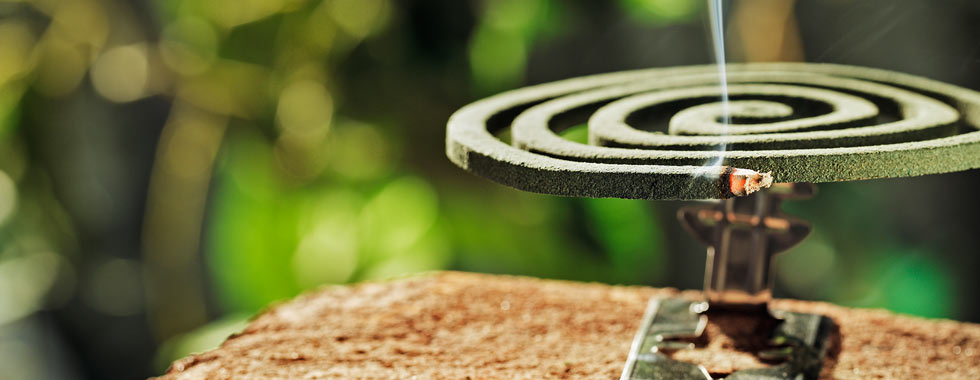
1. Cockroaches
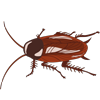
- Japanese name:
- Gokiburi(ゴキブリ)
Cockroaches are the most common household creepy crawlers you will encounter in Japan. There are a variety of different species, but the kind found most frequently here might be bigger than what you’re used to. Most people believe that cockroaches hang around in dirty, unclean or garbage areas because of food. But, don’t forget that they can live weeks without food. The hot, humid summer climate is perfect breeding ground for these, the most versatile of insects. Your apartment is far from dirt, but you will still see cockroaches from time to time. Cockroaches come out most, when things are moved around. So when you first move in, you may notice cockroaches coming out of hiding, but don’t panic, it’s not uncommon. They go back to hiding when things settle down and you won’t see them much again if you can keep your place reasonably clean.
Prevention
It is pretty difficult to prevent cockroaches from entering your home and honestly they may be there already. In order to control, daily measures are important.
-
Do not leave food or dishes for a long time.
If food and dirty dishes are left until night, it will be a good food for cockroaches. When cockroaches are crawling, disease-causing bacteria may spread and cause food poisoning. Cleaning frequently is probably the best form of prevention.
-
Let’s clean the shades
If there is rubbish and cooking waste on the back of a refrigerator, under a stove, and places where cockroaches are likely to be hidden, it becomes food for cockroaches.
-
Discard unhygienic items immediately.
If unsanitary items (raw garbage, dirt on the drainage port, etc.) are left as they are, there is a risk that cockroaches will carry pathogens.
If you find one in your apartment, remove the cockroach as soon as you can. For that you will have to spray it and then throw away. But, keep in mind that they are really fast, they can fly.
Note that conventional bug sprays are not effective at cockroaches. Instead, you will have to use specially targeted at these bugs. There are also traps with a sticky pad where you can put food to attract them. These are pretty effective and work nicely because cockroaches are usually more active at night. Another option is to use “gokiburi dango” which works as a food bait. Roaches will eat the poison and eventually die. There are several different types but they all work pretty much in the same way. Cockroaches are seriously tough to kill and you may think they are dead while they are still clinging to life.
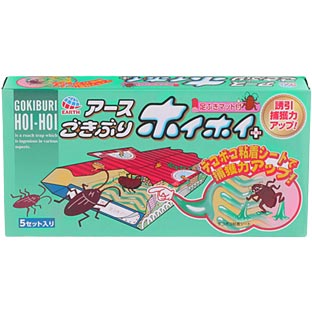
(Common Products:Gokiburi-hoi-hoi)*The design may have been renewed.
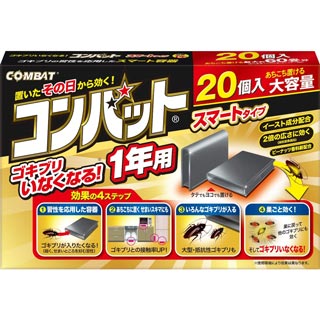
(Common Products: Combat)*The design may have been renewed.
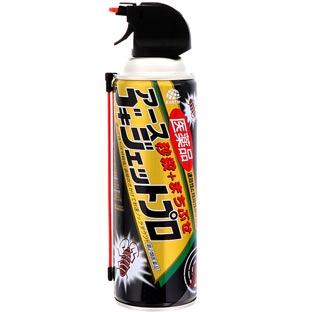
(Common Products :Gokijet-Pro)*The design may have been renewed.
2. Mosquitoes
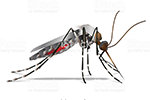
- Japanese name:
- Ka (蚊)
Mosquitoes are probably best known as conduits for spreading malaria. However, the Japanese variety does not typically carry this virus, which is far more common in Southeast Asia. In Japan, your primary worries should be dengue fever — though again this is very rare — and Japanese encephalitis (JEV)
Mosquitoes need water to reproduce, so they are naturally going to be more present in areas with standing water, like rice fields, ponds, etc. Some mosquitoes breed in septic tanks and may bite you while you are at work. You can see these mosquitoes in the subways too.
When mosquitoes bite you, their saliva causes the skin to swell and become itchy and red.
Prevention
- If you notice mosquitoes in your area, try to wear long sleeves and avoid expose your skin to the maximum extent.
- Use insect repellents.
- Since mosquitoes seem to like to hang out on screen doors, buy a hanging mosquito repellent that you can place outside your screen door, which may have some effect.li>
- Depending on the type of mosquito, the time to suck blood differs such as evening to night, noon to evening, so please use mosquito repellents regardless of the time you go out.
- Use repellents safely with children. Please carefully read and follow the instructions before use the product.
- Try to use portable insect repellents and mosquito coils called katorisenko.
- Earth No Mat is the most popular liquid type mosquito killer that plugs into the wall. It comes with 30, 60, 90, or 120 day filler bottles; although that’s assuming you use it for 12 hours a day.
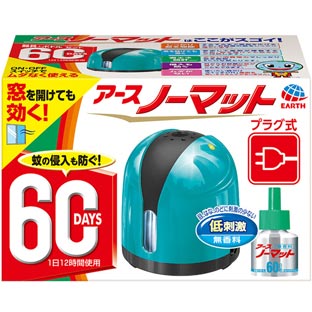
(Common Products:Eath NO Mat)*The design may have been renewed.
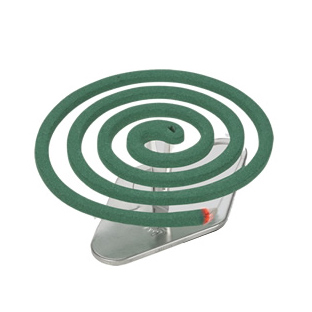
(Katori-Senko)
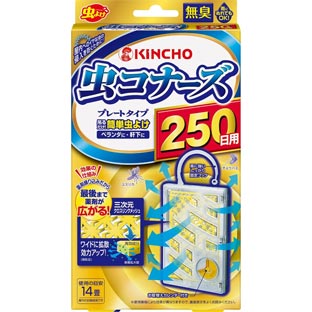
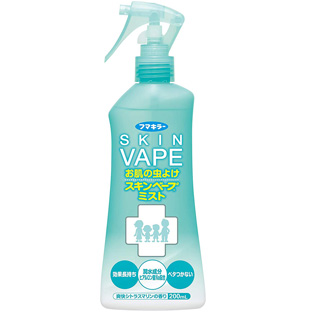
3. Mites
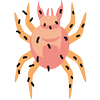
- Japanese Name:
- Dani(ダニ)
They live in bedding, clothes and carpet. Needless to say, the mites themselves are extremely tiny and only barely visible to the naked eye if you look really close. Their bites can create red marks and itchiness on your skin. They aren't necessary dangerous, but they are annoying and hard to get rid of.
If you are bitten by a mite or you might have been bitten by a mite, please receive treatment at medical institutions such as dermatologists. If you find a blood sucking mite, do not try to remove it hard, as it may leave its mouth if you force it.
Prevention
- Also like cockroaches, best defense is keeping your place clean. Vacuum every week and shake out and change bedding frequently. Heat and UV light will kill mites, which is why you see your Japanese neighbours hang out their bedding and futons out in the sun.
- If you have a pet, your pet may be infested with mites in the grass and other places during the walk, and it may have brought to the home as it is. Since there are many products for pets against mites please use them.
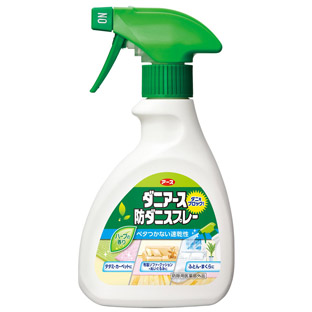
(Common Products:Dani Earth)*The design may have been renewed.
4. Flies
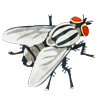
- Japanese Name:
- Hae(ハエ)
Houseflies inhabit the environment in which people live and hardly exist in the natural environment. They like to break into the house indoors, especially in the kitchen, living room and toilets. It is said that there are over 60 species of diseases such as dysentery, cholera, typhus, polio etc. which are transmitted to humans and livestock by flies.
Prevention
- Best way to reduce flies is improving the living environment such as collecting garbage and flushing the toilet.
- Aerosol spray is a common way to control flies.
Fruit Fly
- Japanese Name:
- Kobae(コバエ)
The Kobae, or fruit fly, is harmless but highly annoying. As the name implies, they are attracted to fruit and sweet things. These guys love to turn your trash into a love shack, where they breed repeatedly in the summer months. Apparently they lay their eggs on fruit, which is just another reason to wash your fruit before eating it.
Prevention
- Try not to make fly friendly environment. It is important to reduce the attraction sources as much as possible, such as cleaning, dumping raw garbage early, and carefully cleaning around the drainage port.
- There are sticky pads you stick to the inside lid of your garbage can or you can get a trap sold in a store.
It’s always good to have basic pest control supplies on hand in your home. By following these simple precautions you can enjoy a bug free stay here in Japan.